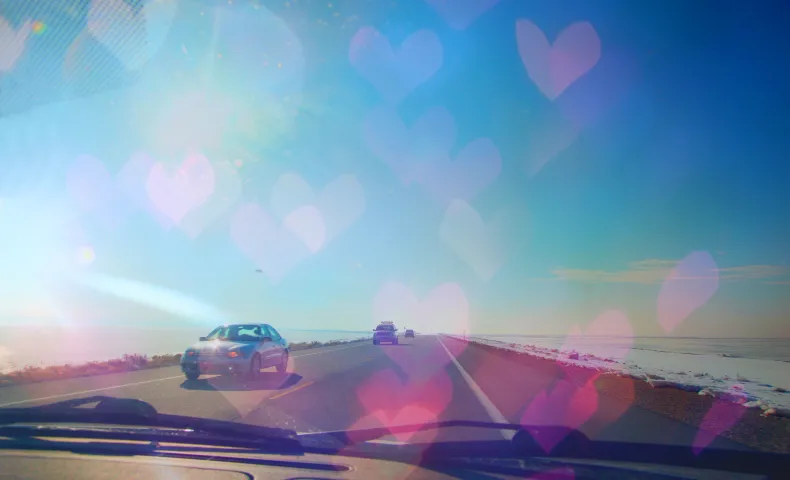 Photo by Flickr user Purple Sherbet Photography
Photo by Flickr user Purple Sherbet Photography
Rachel & Felicia
Rachel Timoner, 41, and Felicia Park-Rogers, 41, were married on June 17, 2008. Their wedding took place on the first day that it was possible for same-sex couples in California to marry. It was shortly after the state Supreme Court ruling in May 2008 that the state’s ban on same-sex marriages violated state constitutional rights, and before California voters essentially reinstated the ban with their approval of Proposition 8 in November of the same year.
At the time of their marriage, Rachel and Felicia had been together for 16 years. During the years before they were married, the couple had registered with local and state authorities as domestic partners and had received a short-lived marriage certificate from the City of San Francisco in 2004. Their story reflects the decades-long struggle of same-sex couples to gain equal marriage rights under local, state and federal laws. Rachel and Felicia have two children, Benjamin and Eitan. The boys were 5 and 2, respectively, at the time of the wedding.
This One Felt Special
RACHEL: Depending on how you count them, this was either the fifth or sixth time we had some kind of a commitment ceremony, and we have a million anniversaries.
FELICIA: But this one felt special.
RACHEL: It did, absolutely.
FELICIA: The kids didn’t quite get it. They already see us as a married couple and to a certain degree they don’t even understand what marriage is yet.
RACHEL: They know that we’re a family. Just like the family next door, and the family down the street, and their friends at school.
The state Supreme Court ruling in 2008 put California at the forefront of the movement to advance the cause of marriage equality for same-sex couples. Despite state action on the issue, however, the federal government does not recognize same-sex unions because of the Defense of Marriage Act (DOMA) passed under President Bill Clinton in 1996.
California Supreme Court’s beautifully written decision
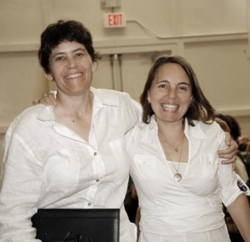
RACHEL: Getting married started out to be just a formality—let’s just do this thing. And yet when we got there we both were really choked up—moved.
FELICIA: And very happy. We got legally married because we could. We just thought how fun it would be to be part of history, to be one of the first same-sex couples to be legally married in California. We didn’t have to worry or have any second thoughts or doubts. Is she really the one? Yeah, she’s the one.
We got legally married because we could. We didn’t have to worry or have any second thoughts or doubts. Is she really the one? Yeah, she’s the one.
RACHEL: We just wanted to move on with this thing.
FELICIA: At first I said I wasn’t going to do it again until it was a federally sanctioned marriage. I didn’t want to go through it again. But when the California Supreme Court announced that they were going to allow same-sex marriage—it was such a beautifully written decision. And we realized that we didn’t have to wait for federal approval, because we won’t have to get married again when a federal law passes. The state marriages will apply.
RACHEL: I felt some flowering of hope and wanted to be part of this hopeful, historic moment. We leaped at the opportunity.
FELICIA: We lined up on the first possible day.
At the time of their marriage, Rachel was a rabbinical student and Felicia was executive director of Beth Chayim Chadashim, the oldest lesbian and gay synagogue in the world. It’s a position she still holds today. Rachel is now a rabbi serving the Reform Jewish community of Leo Baeck Temple in Los Angeles.
This Is Forever
FELICIA: We were both 21 when we met at work. One day we had a chance to get to know each other a little bit better. Before we knew it, 12 hours had gone by.
RACHEL: I thought to myself, I’m going to know Felicia for the rest of my life. I didn’t necessarily think that we would be lovers, but when that happened I thought maybe we’d last three months or six months or a year. I was 21, I thought three months was a really long time. But it just kept going, and it kept being good.
FELICIA: It was a very romantic time. We were like puppies. We never had enough time to say everything we wanted to say to each other, or to do the things we wanted to do together—to experience together.
RACHEL: I think that at 21, if someone had said to me, “This is going to be forever,” it would have been a shocking thought. But then we were 22 and then we were 23 and 24. It just kept unfolding.
Before 2008, the primary vehicle for same-sex couples in California to establish a legal relationship was the domestic partnership. Traditionally, the privileges associated with domestic partnerships were limited to hospital visitation rights and the right to be claimed as next-of-kin in a will. By creating a separate legal status for same-sex couples, domestic partnerships amounted to unfair and unequal treatment. Research has shown, for example, that the tax code’s different treatment of LGBT families has a real and substantial impact on economic security for same-sex couples and their children.1
Planning Your Same-Sex Commitment Ceremony: A Hers-And-Hers Guide
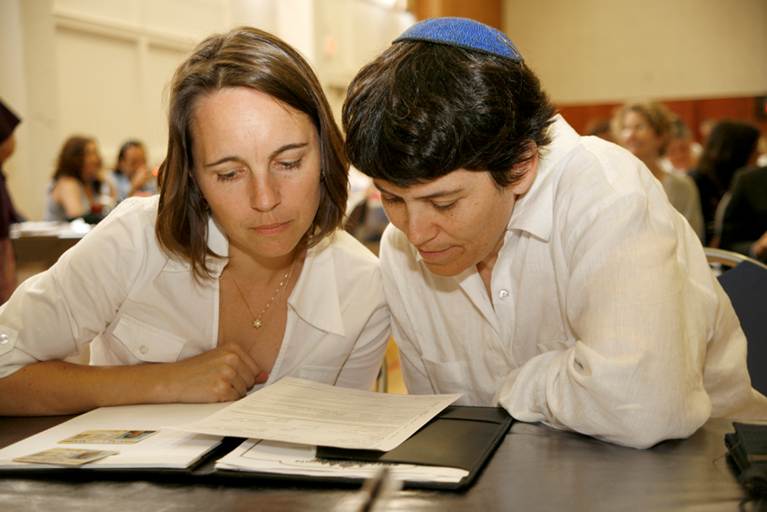
FELICIA: We’d been together about four years when we went to another lesbian couple’s commitment ceremony, and afterwards they gave us a book called Planning Your Same-Sex Commitment Ceremony. A hers-and-hers guide to commitment ceremonies. Honestly, it did plant a seed—we had been together for a while and it seemed like a really good time to make a public statement. On our anniversary, Rachel surprised me.
Rachel told me to get dressed up, and she blindfolded me and drove around in circles. She parked, helped me out of the car, took the blindfold off, and we were at the beach. She had champagne and roses and chocolate.
RACHEL: Two roses and three truffles. Three truffles for three sweet years, two roses for two individual beautiful people that we were, and one bottle of champagne was for the one celebration of our union.
FELICIA: It was totally sweet, and I was completely surprised and happy. We had a little bit of champagne—just a tiny bit—and then we were walking back to the car and this police car rolled up. We thought, “Oh no! Is this going to get ruined? Are we going to get a ticket for having an open bottle of alcohol?” The cop rolled down the window.
RACHEL: She blocked our way out of the beach.
FELICIA: Through the window she wagged her finger, signaling us to come over to her. We walked over and she had tears rolling down her face. She said, “From where I was, I couldn’t tell if you were two women, but I could tell that it was beautiful. That was the most romantic thing I’ve ever seen. That gives me faith in love.”
From where I was, I couldn’t tell if you were two women, but I could tell that it was beautiful. That was the most romantic thing I’ve ever seen. That gives me faith in love.
RACHEL: Then we went to City Hall and registered as domestic partners. That counts as number one, our first ritual. I think it was 1990 or 1991.
FELICIA: Then we started planning our first big public ceremony—we called it a ceremony of celebration. We invited all of our friends and all of our family, just like a real wedding—there were about 150 people. It was in Golden Gate Park, friends and family participated in different ways.
RACHEL: The whole thing was outside the norm, but I don’t think that made it less meaningful to people. I think it was actually eye-opening. With that first line, “I will be good to you always,” we meant that even if our relationship changed, we wanted to be good to each other in that experience. That was our forever—a promise to be good to each other forever.
That was our forever—a promise to be good to each other forever.
The City of San Francisco allowed same-sex couples to register as domestic partners starting in 1991. Eight years later, then-Governor Gray Davis signed a 1999 law allowing same-sex couples to register at the state level as domestic partners and broadening their legal rights. But California, like all other states, still banned marriage for same-sex couples. In early 2004, then-mayor Gavin Newsom directed the San Francisco city-county clerk to issue marriage licenses to same-sex couples. In the month that followed, about 4,000 same-sex couples received their licenses from the City. The California Supreme Court annulled all of these marriages in an August 2004 ruling.
Signed, Married, Annulled
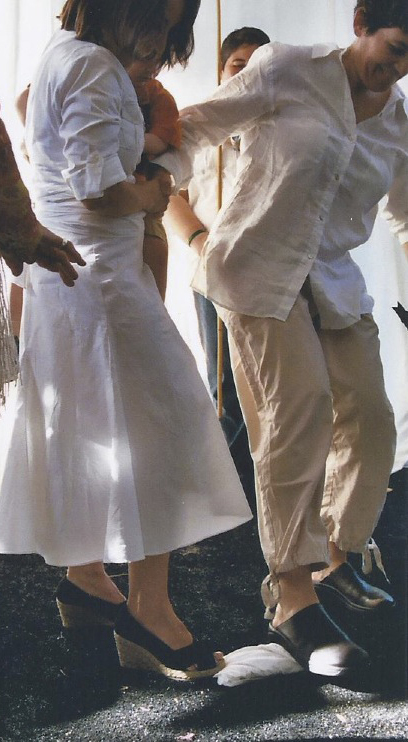
FELICIA: Our first two unions were the San Francisco domestic partnership and the ceremony of celebration. Then the statewide domestic partnership became available. That was our third. At that point we’d become affiliated with a mostly LGBT synagogue, and one day they lined up a bunch of notaries, and the rabbi and everybody signed up for the state domestic partnership on the same day.
RACHEL: The rabbi gave each person an index card and asked us to write something to each other that started with, “You are holy unto me,” and then went from there. Mine said something like, “You are holy unto me as you live each day, and as you grow a new person to live and love with us.” Felicia was pregnant at the time. And there was something about how much she loves and delights in life. That index card still lives on our fridge!
FELICIA: Our next ceremony, number four, was in 2004 when Gavin Newsom declared that same-sex marriages would happen in San Francisco. We went on February 15, with our friends and their daughter, and our son, Benjamin. We waited in line.
RACHEL: All day.
FELICIA: It was historic, and we wanted to have the rights that we needed to protect our son.
RACHEL: By that time, our ceremonies had begun to feel less personal and more like political statements. But each time I was surprised by how choked up I got, and how it was not just being part of the group, it was, again, about us looking at each other and saying, “This matters.”
FELICIA: I choose you.
RACHEL: Most people don’t get to do that with the same person, over and over. They had to legally annul our 2004 marriage, but we still have that first marriage certificate.
FELICIA: And our annulment papers. We got our annulment papers not too long after the marriage, while we were living in Jerusalem when Rachel was in rabbinical school.
RACHEL: We didn’t even have to sign those papers. It was done for us. Automatically annulled. Poof.
FELICIA: When we came back to the country, California had strengthened their domestic partner laws. We didn’t have another ceremony, but we did have to reregister for our domestic partnership.
RACHEL: That was our fifth registration. They said that our domestic partnership status was in danger because we had gotten married and so we had to redo our domestic partnership. So that means we’ve done six partnership registrations.
FELICIA: That was just paperwork. But we’ve paid a lot of money over the years.
RACHEL: A lot of fees.
Other Legal Hoops, Like Adopting Our Sons
RACHEL: There’s another thing—just in terms of all the hoops we’ve jumped through. I had to adopt both of our children. After the state domestic partnership, and before the San Francisco marriage, we went through the whole adoption process with Benjamin. If you think about it, we’ve been together for 16 years and what percentage of that time have we been in some legal process about our status? The adoptions are lengthy.
FELICIA: And expensive, too. You have to hire a lawyer, you start out with one birth certificate and then, after the adoption process, you get a new birth certificate reissued with Parent One and Parent Two.
RACHEL: The second time we adopted, with Eitan three years later, we were able to have both of our names on the birth certificate right from the beginning.
FELICIA: By then, we had proof of our domestic partnership, but we still needed to go through the adoption process because the partnership, and now the marriages, are not recognized out of the state. The first adoption was what they call a stepparent adoption. For the second round, we didn’t have to go through a second parent adoption.
RACHEL: The laws have certainly gotten better in the time since we’ve been a couple.
Our Big, Gay Legal Wedding
On May 15, 2008, the California Supreme Court ruled that the state’s ban on same-sex marriage violated the California constitution. The ruling made it official that same-sex couples in the state were able to marry.
FELICIA: Now comes ceremony number six, registration number seven, anniversary number—I’m not sure. By the time of our legal marriage we’d moved to Los Angeles and we went with a group from our synagogue. The city of West Hollywood did such a beautiful job. The city employees decorated a space in one of their parks and recreation buildings, and they put out a red carpet and a balloon arch. They processed hundreds and hundreds of people that day.
RACHEL: We were number 296 in the state. And this was the first time we were married under a chuppah—a wedding canopy—by a rabbi.
FELICIA: The rabbi designed a ceremony that was particular to us, but with similar vows to the civil formal vows.
RACHEL: We don’t need the state telling us that we’re legitimate—we were already legitimate a long time ago. On the other hand, there are ways that it really does matter. Benji is old enough to understand it a little bit and it matters to him. My child knows that some people say that our family is not equal and doesn’t deserve to exist. That is deeply wounding. But now, suddenly, in the eyes of many people, we are now legitimate. They say, “Now you’re really married.”
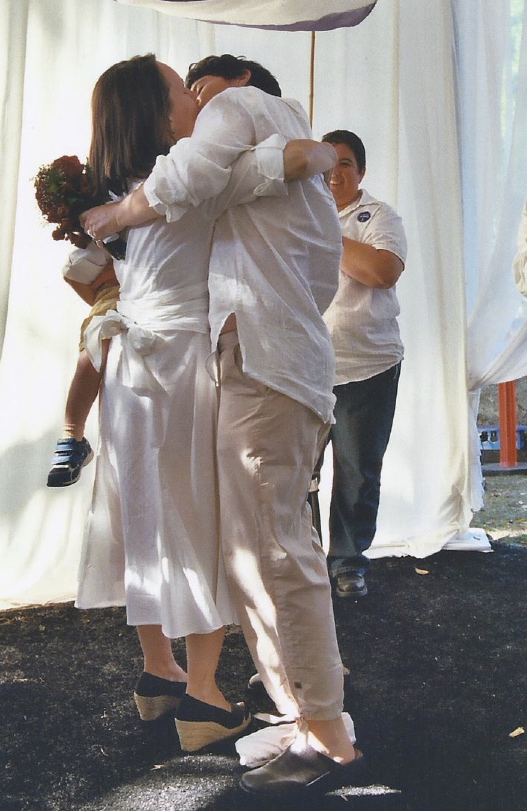
In November 2008, less than 4 months after Rachel and Felicia were married, California voters approved Proposition 8, which amended the state constitution to restrict marriage to opposite-sex couples. A subsequent state Supreme Court ruling affirmed that same-sex couples who were married before Proposition 8 was approved would still be recognized by the state as legally married. The freedom to marry was restored in California in 2013 in the Hollingworth Vs. Penny decision.
FELICIA: I’m happy that we had our wedding and that our marriage is valid, but other gay people can’t get married from now on—and that’s taken a lot of the joy out of our experience. What about my sisters and brothers who are ready to make that leap? It’s just appalling, so deeply disturbing. I have the protections that I need for my family, but I’m not walking around saying, “Yay! This is my wife!”
RACHEL: I think ultimately, when you get married or make a formal commitment, you’re just articulating something that’s already true. As a rabbi, when I think back on all of our ceremonies and rituals, the things that have been most important are the steps that we’ve made toward acknowledging what is sacred in the love that we share.
1 See Movement Advancement Project, “All Children Matter: How Legal and Social Inequalities Hurt LGBT Families,” October 2011. Available at www.lgbtmap.org.
This story is excerpted and adapted from the book, Lawfully Wedded Wives, edited by Nona Caspers and Joell Hallowell. For more information, visit herecomethebridesbook.com